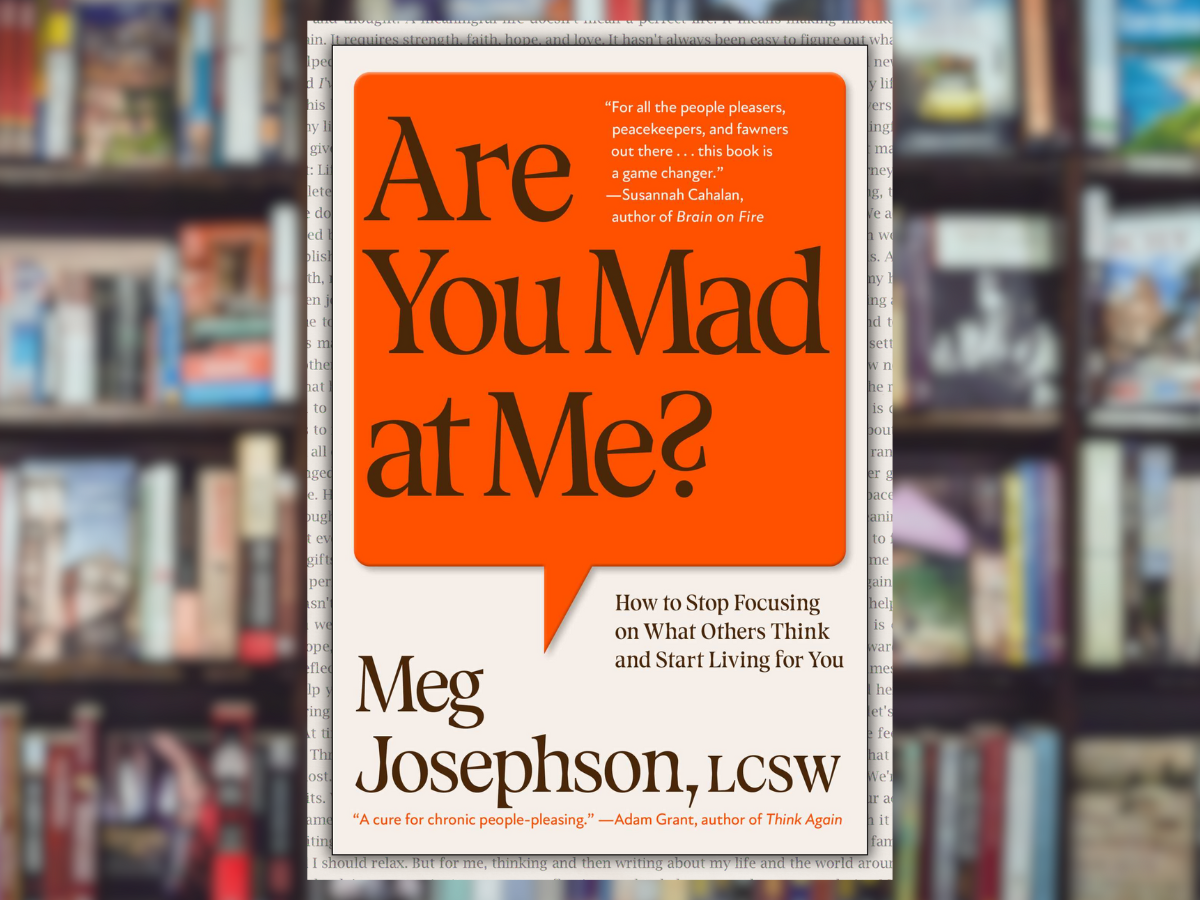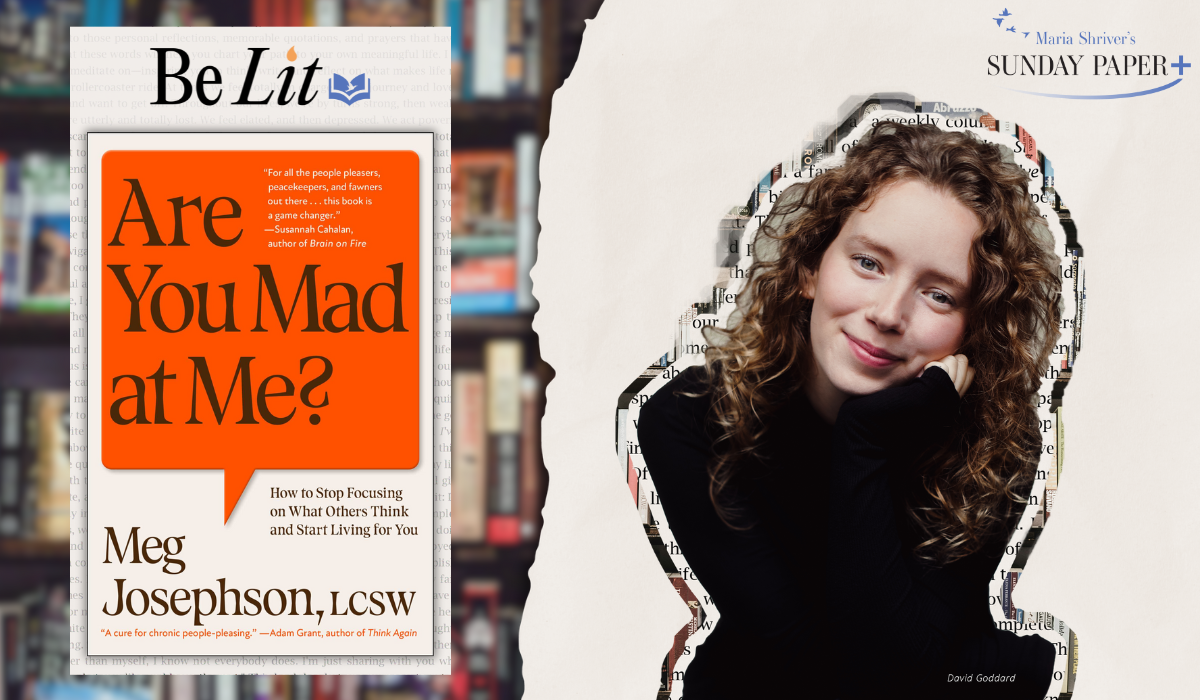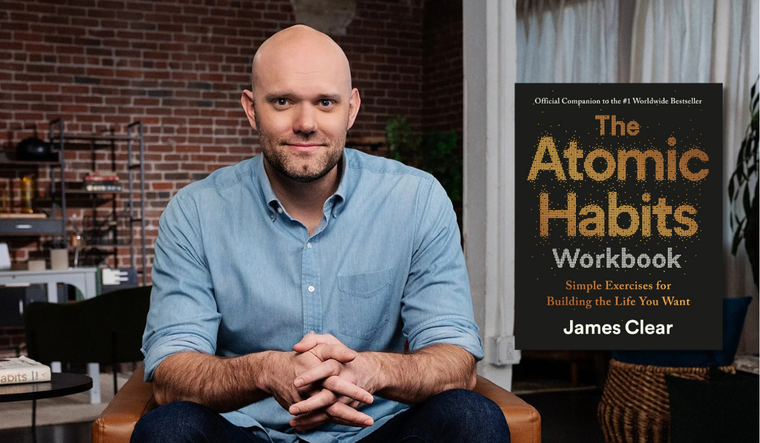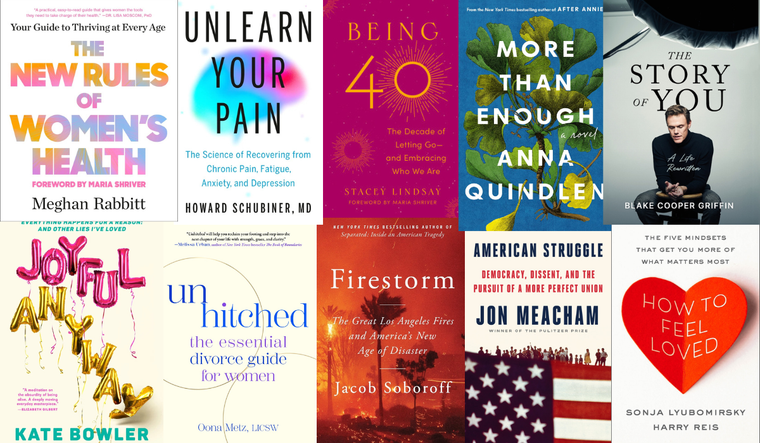Be Lit with Meg Josephson: An Excerpt from “Are You Mad at Me?”
Who
Meg Josephson is a licensed psychotherapist specializing in trauma-informed care. She holds a Master of Social Work from Columbia University and is a certified meditation teacher.
What
Are you constantly worried about what people think of you, if they like you, and if they’re mad at you? You’ve probably heard of the fight, flight or freeze stress responses—but have you heard of the fawn response? In Are You Mad at Me?, Meg Josephson breaks down what she says is the least talked-about trauma response yet arguably the most common.
Why
Meg says she wrote this book, “for the version of myself that found safety through managing people's moods and silencing my needs. In my private practice, I witness clients experience these same people pleasing tendencies, with a longing to break free. For those who’ve kept the peace but lost themselves, I hope this book helps you find your way back.”
& We
…chose Are You Mad at Me? because beyond people-pleasing habits is a version of yourself that no longer depletes you, but bring you joy. Enjoy!
Here’s Your Look Inside

Our brains’ primary job is to keep us safe, plain and simple. This animalistic, survivalist part of our brains has been there since the beginning, for two hundred million years and then some, and is solely focused on basic motives such as avoiding harm, staying fed, and having sex. It’s also in charge of the responses we slip into when we don’t feel safe. When our brains think there’s a threat of some sort, whether that threat is real or perceived, our nervous systems have four responses to turn to: fight, flight, freeze, and fawn.
This book focuses on fawning, which is the least talked-about trauma response yet arguably the most common one. “Fawn response” became a term only in the past decade or so, coined by the psychotherapist Pete Walker in his 2013 book Complex PTSD: From Surviving to Thriving. The other three threat responses are a bit more recognized: the fight response is about being aggressive toward the threat to make it go away (e.g., yelling or beating it up). The flight response is about physically leaving the environment or relationship (e.g., running away or ghosting). The freeze response happens when we can’t physically leave, so we do the second-best thing by mentally departing and blocking out what’s going on (e.g., dissociating, numbing ourselves, constant daydreaming).
But the fawn response? Oooooooh, the fawn response is about becoming more appealing to the threat, being liked by the threat, satisfying the threat, being helpful and agreeable to the threat—so that you can feel safe. Fawning is unconsciously moving toward, instead of away from, threatening relationships and situations. It’s overlooked in our society because it’s so largely rewarded. We get promotions for being people pleasers. We’re called selfless when we neglect ourselves. We receive affirmation when we anticipate the needs of others and abandon our own. For many people, particularly for many women, the fawn response is learned in childhood and then reinforced by society; we’re taught that our main role in life is to please, appease, and sacrifice our needs for the comfort of other people. Fawning has been a tool for survival, an unconscious way to feel in control in a society that strips power from us.
These four responses are not fixed traits, nor are they our destiny. We can slip into any and all of them at different points in time based on what our survival brains and bodies think will be the most effective.
“Fawning isn’t a conscious choice; it’s a genius survival mechanism.”
Walker explains that a fawn response develops in chaotic home environments when a child learns that the fight response escalates the situation or abuse, the freeze response doesn’t offer much safety, and flight isn’t always a feasible option. So, as an alternative survival strategy, the child “learns to fawn [their] way into the relative safety of becoming helpful.” All these stress responses are useful, adaptive, and necessary—but we’re supposed to be in them for only a few minutes or hours at a time, not for years on end. Yet for so many, a chronic fawn response is as natural as breathing.
For most of my life, I thought fawning was just my personality. I almost took pride in it, thinking I was simply a cool girl who didn’t have many preferences or opinions. I could be a chameleon in social circles that I didn’t even want to be a part of and adjust my personality to be palatable to whomever I was trying to please. That chameleon–cool-girl vibe was genuinely protective for a long time. I’d closely monitor my dad’s moods and say the right thing at the right time, or not say anything at the wrong time. When I noticed my dad’s behavior start to escalate, I did anything I could to prevent an explosive outburst. Honestly, it was just easier to make sure he was happy than deal with what would happen if he wasn’t.
Maybe if I’m happy and perfect and good, he’ll be happy, too. Maybe if I’m likable, he won’t get upset at me. None of this was conscious, deliberate thought—fawning is an unconscious response.
Yes, fawning was protective for me then, but when I was past that time in my life, I was left feeling far from myself, like I hadn’t yet met this person who was supposed to be “me.” I’d look into people’s eyes and think, What do they want me to say? And I’d say that.
I remember a seemingly small moment when I started to question whether this laissez-faire attitude was something less than positive, a sign that I had perhaps been neglecting myself. I was picking out bath towels for my first New York City apartment (read: shoebox), standing idly in aisle eight of Bed Bath & Beyond with no idea what to choose. I realized that I had zero clue what my favorite color was. My favorite color! I remember thinking, Let me go on Instagram and see what other people like. My next thought hitme like a punch to the gut: Am I even real? Or am I just a medley of other people’s personalities and preferences? Who am I when I’m not trying to please everyone else?

Excerpted from Are You Mad at Me? by Meg Josephson. Copyright © 2025 by Margaret Josephson. Reprinted with permission of Gallery Books, an imprint of Simon & Schuster, LLC. All rights reserved.
Please note that we may receive affiliate commissions from the sales of linked products.



